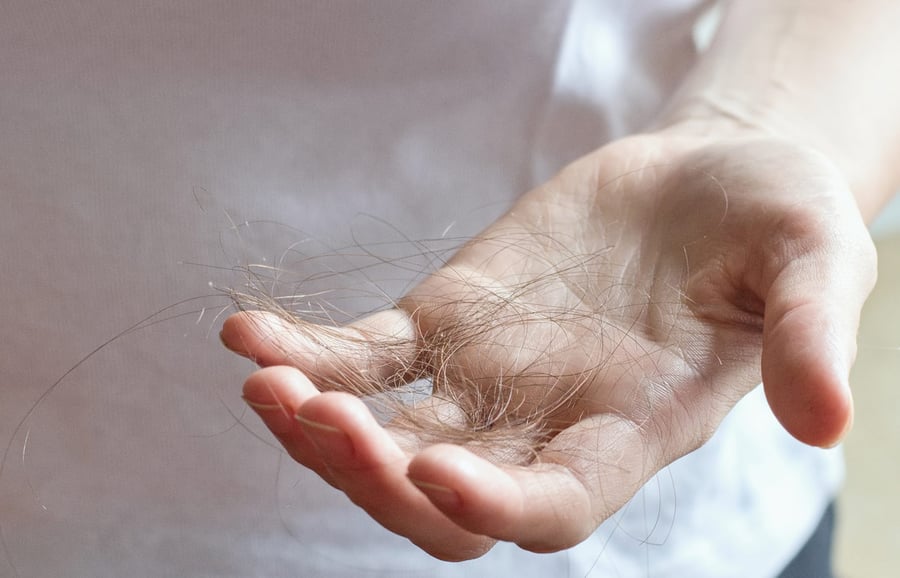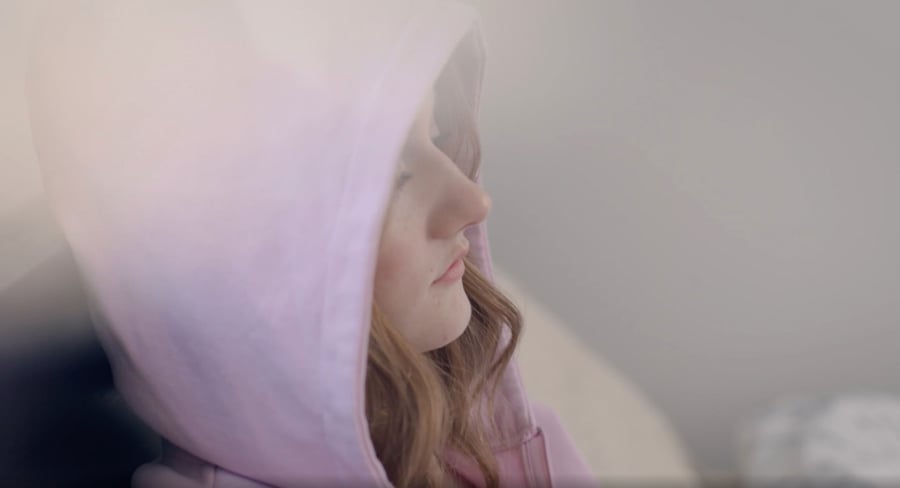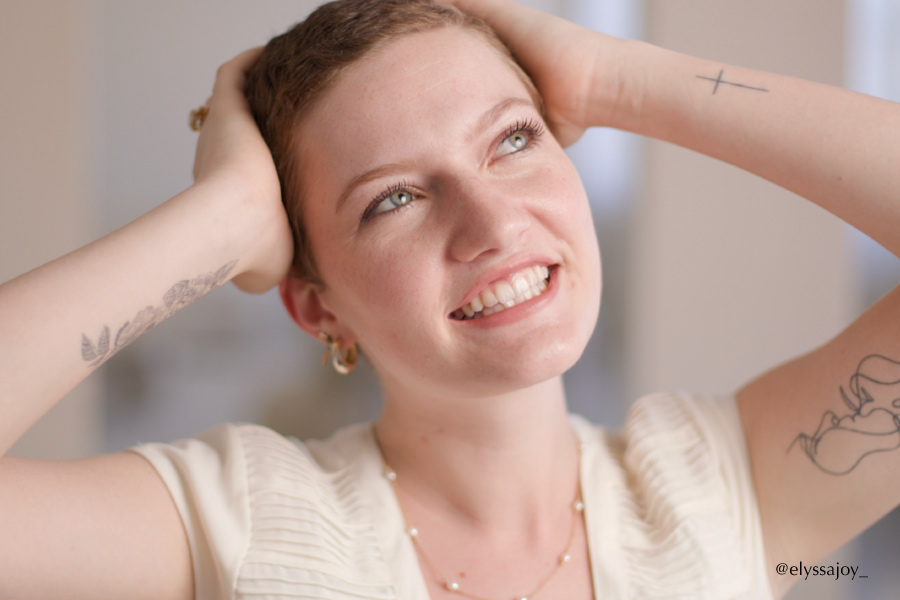Why Do I Pull Out My Hair?: Living With Trichotillomania

Living with trichotillomania means facing a daily challenge that some people find difficult to understand. The constant, overpowering urge to pull out your hair can be both distressing and isolating. If you or someone you know is experiencing this compulsion, you know all too well the cycle of stress, hair pulling, and the subsequent emotional fallout.
Trichotillomania is often hidden in secrecy and can lead to significant hair loss, emotional distress, and a feeling of helplessness. You’re not alone in this struggle; many people suffer from the compulsive urge to pull out their own hair, yet it remains a misunderstood and under-discussed condition.
At Daniel Alain, we have a deep understanding of the effects of hair loss, including trichotillomania. For over two decades, we’ve worked closely with customers experiencing hair loss and hair thinning and helped them find a human hair wig or topper that suits their style, hair loss situation, and lifestyle.
If you’re looking to gain a better understanding of trichotillomania, read some real-life experiences living with the condition, and explore effective strategies for managing the compulsion to pull hair, you’re in the right place.
Our goal is to empower you with knowledge and tools, as you navigate this challenging journey with confidence and hope. Whether you’re directly affected by trichotillomania or supporting someone who is, this article promises to be a valuable resource in understanding and addressing this complex condition.
Understanding Trichotillomania
Trichotillomania is more than just a habit or a bad behavior. It's a complex disorder that can significantly impact a person's emotional and psychological well-being.
People with trichotillomania often feel a growing tension before pulling their hair and experience a sense of relief or gratification afterward. However, this relief is usually temporary and is often followed by feelings of shame, guilt, or embarrassment.
Trichotillomania can affect anyone, but it's more commonly seen in females than males. The onset of the disorder typically occurs in childhood or adolescence, and it can be triggered by stress or trauma. However, the exact cause is unknown and is believed to involve a combination of genetic and environmental factors.
Like many sufferers, Elyssa’s journey with trichotillomania began when she was 14 years old and about to begin her freshman year of high school. A long and stressful family road trip was the trigger that led to the compulsive desire to pull out her hair.

“I had thick, curly, blond hair, down past my waist,” Elyssa recalls, “but a few months after that road trip, I had lost about two thirds of it to trich. I didn’t want to date, I didn’t want to hang out with my friends, I didn’t want anyone to find out that I was pulling out my own hair.”
Trichotillomania Symptoms and Behaviors

- Recurrent pulling of hair: This pulling results in noticeable hair loss. Common areas include the scalp, eyebrows, and eyelashes.
- Increasing tension: A feeling of tension or anxiety often precedes the act of hair pulling.
- Pleasure, gratification, or relief: Individuals may feel these emotions during or after pulling out hair.
- Attempts to stop: Many people with trichotillomania have made repeated attempts to stop pulling hair.
Emotional aspect of Trichotillomania
For many people suffering from trichotillomania, the associated emotions are often as complex and challenging as the physical act of hair pulling itself. The compulsion often leaves people feeling trapped in a cycle of shame and embarrassment.
As Elyssa explains, “I put on a brave face, but deep down I felt ugly and unlovable. It was an isolating and lonely time and my hair-pulling seemed to affect every part of my life growing up. I felt like I was never going to look like other young girls.”

The experience of shame is a common and deeply felt emotion among those living with trichotillomania. Unlike other forms of hair loss that can be attributed to factors beyond one's control, like genetics or illness, trichotillomania is a condition where the individual actively pulls out their own hair. This can lead to feelings of shame and self-blame, as sufferers may feel responsible for their hair loss and struggle with the perception that it's a habit they should be able to simply stop.
However, it's crucial to recognize that trichotillomania is a complex disorder driven by compulsions that are incredibly powerful and often beyond conscious control. The urge to pull hair is not a choice or a simple lack of willpower; it's a part of a serious mental health condition. Recognizing and understanding this can help reduce the burden of shame.
Coping strategies for Trichotillomania
Living with trichotillomania often requires a mix of different coping strategies to manage the condition effectively. One key approach is behavioral therapy, like Cognitive Behavioral Therapy (CBT), which helps in identifying triggers and replacing the hair-pulling behavior with healthier habits.
Mindfulness and relaxation techniques, such as meditation and deep breathing exercises, can also be valuable in reducing stress and increasing awareness of the urge to pull.

Many people find keeping their hands busy helpful in redirecting their focus away from pulling out their hair. Consider:
- Knitting
- Drawing/doodling
- Fidget toys/stress balls
- Playing a musical instrument
- Jigsaw puzzles
- Practicing calligraphy or hand-lettering
Covering the hair can also be an effective strategy to prevent access and reduce the temptation to pull. Here are some methods for covering the hair:
- Wigs
- Hats and beanies
- Scarves and headwraps
- Bandanas
- Hooded sweatshirts
- Headbands or wide hair bands

While it’s not for everyone, Elyssa decided to shave her head and start wearing wigs to help deal with the urge to pull out her hair. Wearing a natural-looking human hair wig became integral to accepting her trichotillomania and allowed her to release the negative feelings of self-worth and shame she was experiencing. Looking at herself in the mirror with a full head of beautiful, healthy hair was life-changing. “Being able to feel like me again, was magical.”

Tracking pulling behaviors can be another valuable tool in managing trichotillomania. By maintaining a record of hair-pulling episodes, people can gain a clearer understanding of their triggers and patterns. This awareness can be instrumental in developing strategies to reduce the frequency and intensity of the urges. Here are a few methods to effectively track pulling behaviors:
- Journaling: Keep a detailed journal where you note the time, location, emotional state, and circumstances surrounding each pulling episode. This can help identify specific patterns and triggers.
- Mobile Apps: There are apps designed for habit tracking that can be customized for monitoring trichotillomania. These apps often include features like reminders, progress tracking, and visualization tools.
- Calendar Method: Using a physical or digital calendar to mark the days and times when pulling occurs. This visual representation can highlight trends and high-risk periods.
- Behavioral Charts: Creating charts that log pulling episodes, including the duration and intensity of each episode. This can be particularly useful in therapy or when working with a healthcare provider.
What are my next steps in my journey with Trichotillomania?
If you’re living with trichotillomania, you may have experienced moments where the urge to pull hair felt uncontrollable, leaving you with a sense of defeat and powerlessness. This path has likely been challenging, marked by a search for understanding and ways to manage your condition.
This article has outlined the complexities of this condition, the emotions tied to it. We've explored various coping strategies, from behavioral therapy to mindfulness, and the importance of keeping your hands busy and your head covered.
Looking ahead, if you want to restore your look after hair loss caused by trichotillomania, or want to prevent further loss by covering your head and are considering buying your first human hair wig, we would be honored to help you in your search for the perfect piece.
We have spent decades helping women regain their confidence by wearing the hair of their dreams, and our experienced consultants are waiting to help you discover the transformative power of the right wig. Booking an appointment for a consultation is the perfect way to start your journey. We look forward to helping you.


.jpeg)
